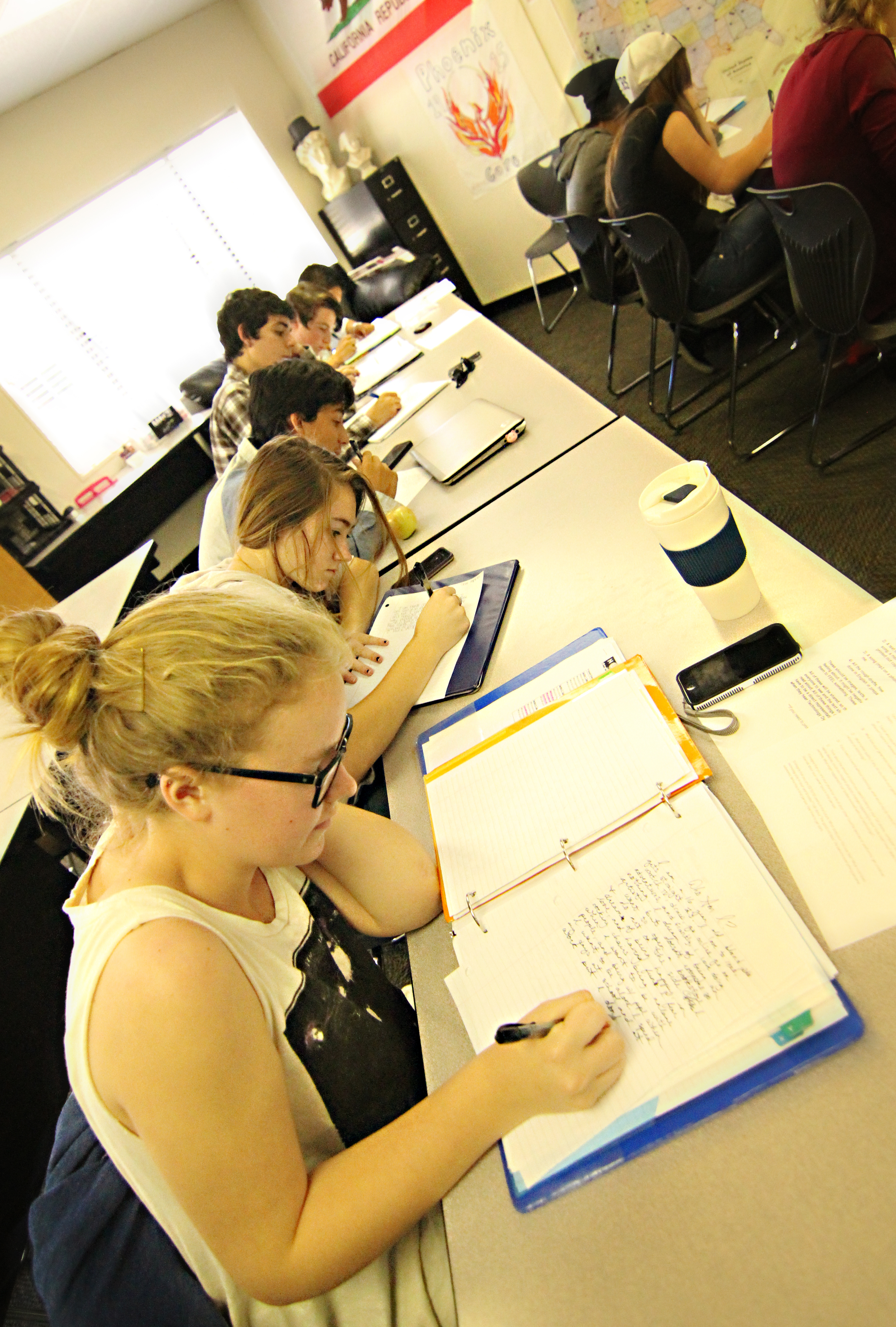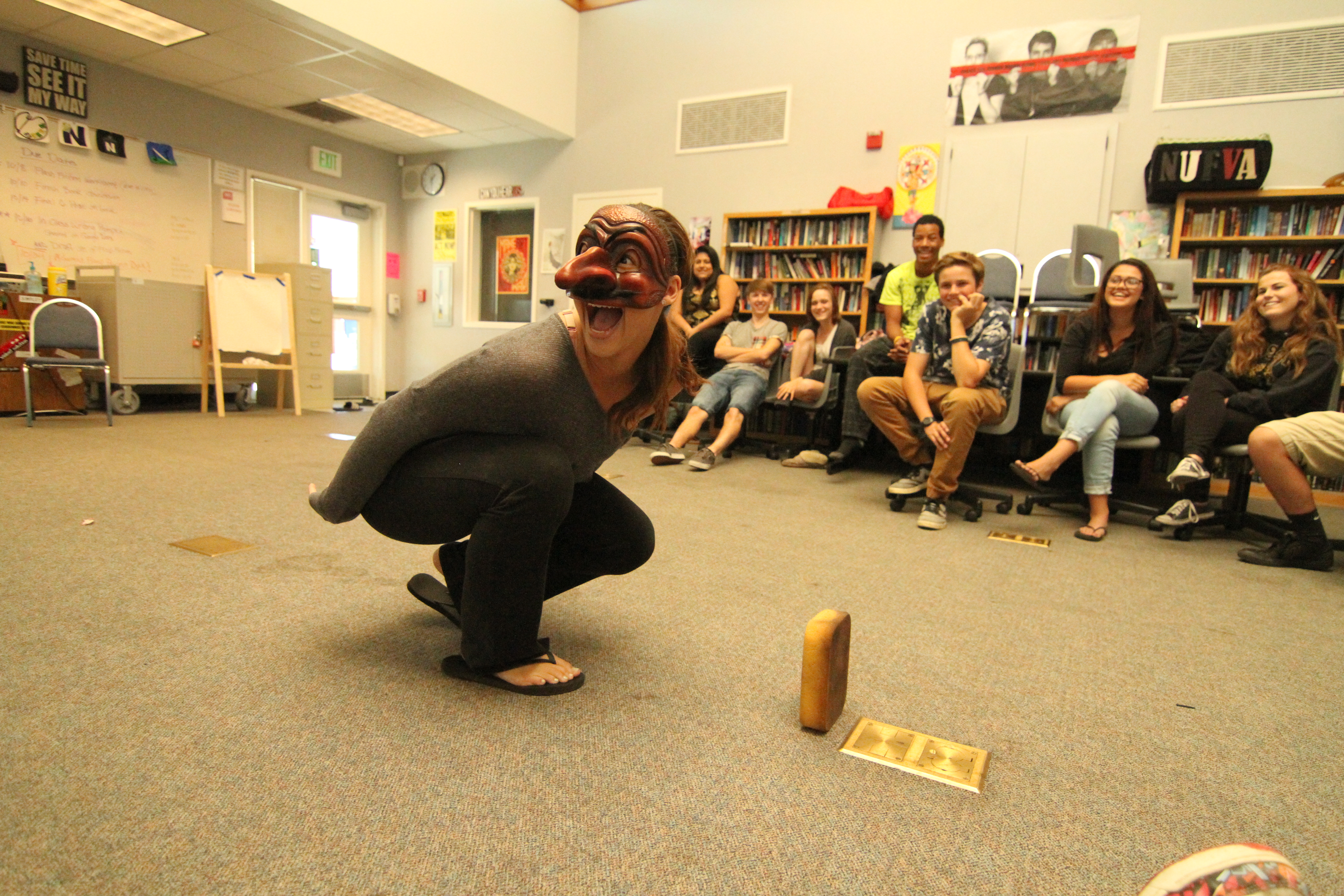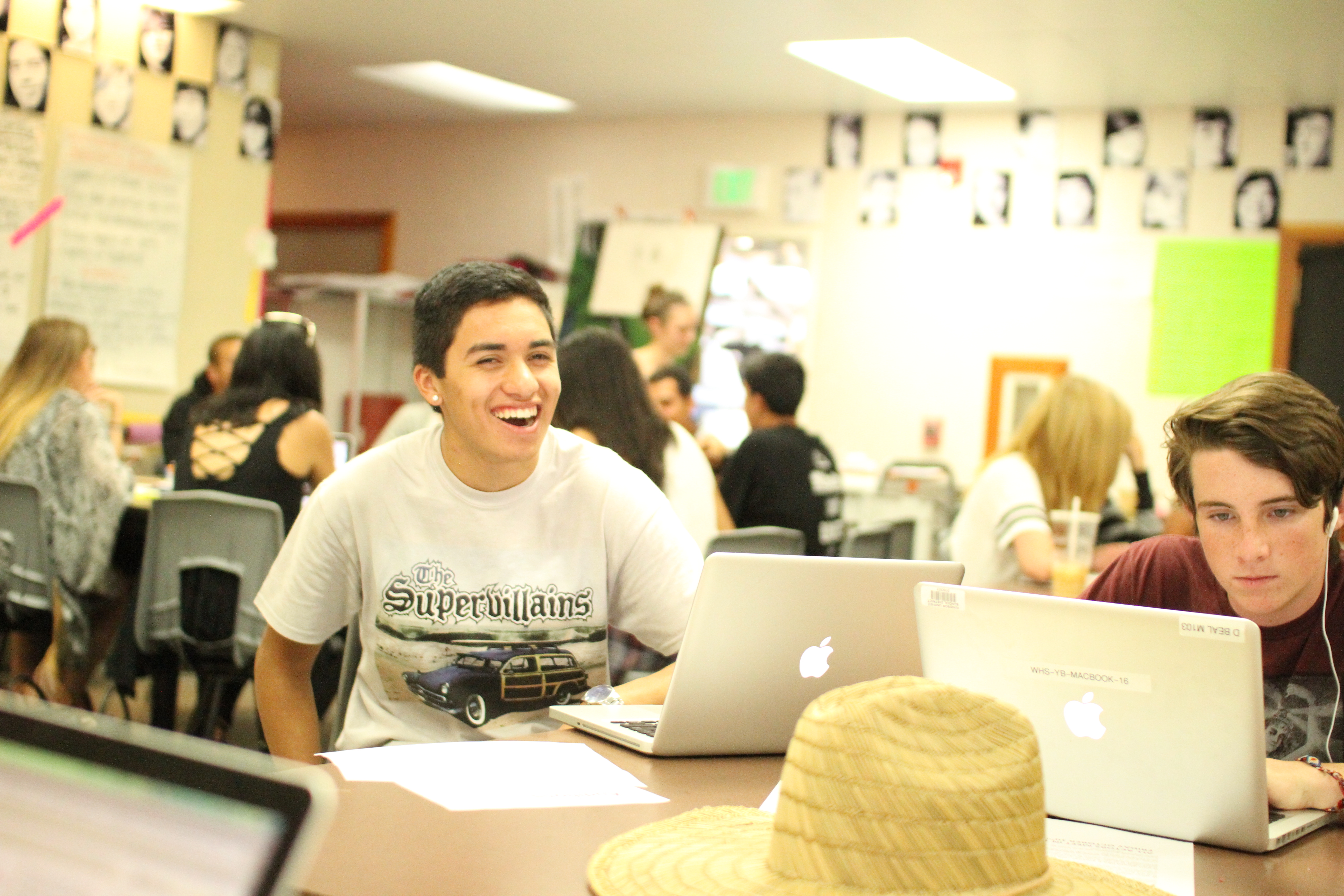Use this as a template to send an email to potential mentors:
Use this sample proposal to check your proposal for content
Use this form to request a letter of recommendation:
DIGITAL PORTFOLIO - Personal website
Tabs:
1/10: Revisit Requirements for portfolios
Pass out and explain requirements for letters of rec (seniors need at least one from this year)
Set up PRINT folder on server
Business Cards
Spine
Head Shot
[Sample] Cover Letter and [UP TO DATE] Resume with unified theme/letterhead
Internship Proposal [REVISED Text only], reflection, and [best] Images (5 total)
DIGITAL
Tabs:
1/12: INTERNSHIP TAB:
-----------
1/17: RESUME:
1/19: PRODUCTION TAB (Beal and Snyder to SHN - Neverland)
1/23: BIG BLOCKS: Timecard Blog (Frenzel) and progress check in (Beal & Frenzel). Marin Theatre field trip.
Internship checklist handed out: print yours here.
Proposal digital signature and mentor agreement check, hours check
Reminder two letters of recommendation (at least one from this school year) are due in two weeks. Get your request forms to your recommenders today! Get that form here.
1/25: BIG BLOCKS: Charle Sparacio to teach Illustrator
Work on Branding (InDesign, Photoshop or Illustrator.)
Color pallette, logo and graphic element decisions made. Save all work to server.
1/27: Mini-blocks: Intro to designing the spine of your portfolio.
Intro to adding logo to business card, spine, cover letter and resume.
Work on logo design and branding all parts of your portfolio.
----------
1/31: Lesson: Ins and Outs of Documentary evidence
Work on PRODUCTION TABS from previous productions (Seniors from 2015/2016 and Fall).
Upload reflections and create slide shows
Lesson: Finalize unified elements. Elements should be included on:
[PRODUCTION TAB UPDATES DUE END OF BLOCK]
2/2: No Beal Big Blocks Frenzel and Richards
----------
2/6: HOME PAGE
2/8: Work day: adding unified design elements added to:
2/10: Timecard blog work
Minimum ½ of all hours must be reflected on Timecard blog with images/documentary evidence.
[DUE AT END OF BLOCK]
[DUE AT END OF BLOCK] - PDF versions to appropriate folder on server.
Anything submitted after today will be student's responsibility to print.
----------
2/15: EVIDENCE AND DOCUMENTATION FOR PORTFOLIO AND DIGITAL PORTFOLIO
[Hard copies of SIGNED LETTERS OF RECOMMENDATIONS DUE AT END OF BLOCK]
2/17: GRADING PERIOD ENDS
All elements of Digital portfolio due.
Tabs:
- Home Page (Bio and Headshot)
- RESUME - Up to date Resume
- LETTERS OF RECOMMENDATION - two required (include photo and bio of recommender)
- INTERNSHIP/CAPSTONE PROJECT (Junior) and Capstone Project (Senior internship) - Includes mentor information and headshot, proposals, timecard blog [button], reflection, and documentary evidence slideshow
- PRODUCTION [includes reflections and documentary evidence slideshows]
- OTHER INTERESTS - Interest or writing: includes interest blog [button] and anything else relevant.
1/10: Revisit Requirements for portfolios
Pass out and explain requirements for letters of rec (seniors need at least one from this year)
Set up PRINT folder on server
Business Cards
Spine
Head Shot
[Sample] Cover Letter and [UP TO DATE] Resume with unified theme/letterhead
Internship Proposal [REVISED Text only], reflection, and [best] Images (5 total)
DIGITAL
Tabs:
- Home Page (Bio and Headshot)
- UP TO DATE Resume/ [sample] Cover Letter,
- Letters of Recommendation
- Internships (Junior and Senior) Includes mentor information and headshot, proposals, timecard blog [button], reflection, and documentary evidence slideshow
- Production [includes reflections and documentary evidence slideshows]
- Interest or writing: includes interest blog [button] and anything else relevant
1/12: INTERNSHIP TAB:
- Revise, update and upload (to weebly) proposal document (with digital signatures)
- create button for timecard blog (Seniors need to reorganize and update Junior Internship content, as well as senior. Juniors need to focus on Junior internships)
- Add Mentor Headshot and bios
-----------
1/17: RESUME:
- Update experience section of resumes with fall production role and responsibilities
1/19: PRODUCTION TAB (Beal and Snyder to SHN - Neverland)
- (Seniors will need to add reflections from Jr year and fall as well as create slideshow from all shows from server)
1/23: BIG BLOCKS: Timecard Blog (Frenzel) and progress check in (Beal & Frenzel). Marin Theatre field trip.
Internship checklist handed out: print yours here.
Proposal digital signature and mentor agreement check, hours check
Reminder two letters of recommendation (at least one from this school year) are due in two weeks. Get your request forms to your recommenders today! Get that form here.
1/25: BIG BLOCKS: Charle Sparacio to teach Illustrator
Work on Branding (InDesign, Photoshop or Illustrator.)
Color pallette, logo and graphic element decisions made. Save all work to server.
1/27: Mini-blocks: Intro to designing the spine of your portfolio.
Intro to adding logo to business card, spine, cover letter and resume.
Work on logo design and branding all parts of your portfolio.
----------
1/31: Lesson: Ins and Outs of Documentary evidence
Work on PRODUCTION TABS from previous productions (Seniors from 2015/2016 and Fall).
Upload reflections and create slide shows
Lesson: Finalize unified elements. Elements should be included on:
- Business card
- Spine
- Cover letter
- Resume
[PRODUCTION TAB UPDATES DUE END OF BLOCK]
2/2: No Beal Big Blocks Frenzel and Richards
----------
2/6: HOME PAGE
- Write [or update] bio, upload headshot - rough draft updated from first semester
2/8: Work day: adding unified design elements added to:
- Business card
- Spine
- Resume
- Cover letter
2/10: Timecard blog work
Minimum ½ of all hours must be reflected on Timecard blog with images/documentary evidence.
[DUE AT END OF BLOCK]
[DUE AT END OF BLOCK] - PDF versions to appropriate folder on server.
Anything submitted after today will be student's responsibility to print.
----------
2/15: EVIDENCE AND DOCUMENTATION FOR PORTFOLIO AND DIGITAL PORTFOLIO
[Hard copies of SIGNED LETTERS OF RECOMMENDATIONS DUE AT END OF BLOCK]
2/17: GRADING PERIOD ENDS
All elements of Digital portfolio due.
Reimagining Learning through Space Design
Meaningful Teaching with Technology: Innovation and the design thinking process in the reimagination of classroom and workspace design
Project Description: To use the design thinking process to redesign work/learning spaces to meet user needs: Can we come up with a desirable, feasible, and viable alternative to the “norm”?
4 week unit: Outline of structure:
Meaningful Teaching with Technology: Innovation and the design thinking process in the reimagination of classroom and workspace design
Project Description: To use the design thinking process to redesign work/learning spaces to meet user needs: Can we come up with a desirable, feasible, and viable alternative to the “norm”?
4 week unit: Outline of structure:
|
Grading Period 3 Week 1: 11/28 Day 1: Project Launch Set-up research teams with the following roles: Team Leader: Facilitates team meetings and manages collaborative effort Portfolio Manager: Creates a shared folder and submits all daily work on Google Classroom Field Researcher: Conducts empathy interviews and reports to team. Will go on field research (field trip) to collect data Note taker/Record Keeper: keeps minutes for group meetings Project Developer: Creates movie for presentation and pitch (using screencast or Adobe Spark) Presenter: Presents research to panel of industry professionals and stakeholders Large group Instruction (30 minutes): slideshow of different types of workspaces and learning environments https://docs.google.com/a/wusd.org/presentation/d/1CS9aDJy_v3ZXRB6fk3feol2xHepHhX0prF9vRKb9SqY/edit?usp=sharing Independent Reading (30 minutes): Close Reads: Top 10 Most Innovative Schools StandUpKids Take Home work on Google classroom (allow approximately 30 minutes): reflect on articles and form Essential Question. What do we need to take into consideration to reshape learning environments? Sample essential questions: How does environment impact the way we learn? How would your investment in the project help change your overall attitude about school? How can other environments help us shape our academic world? What elements do we consider important in making a space “comfortable” and “optimal for learning” -Brainstorming: What do we need to take into consideration to reshape our learning environment? (example: Structure, budget, learner's needs and a variety of learning spaces...) “YES AND….” Essential Question Formulation: Student driven 11/30 Day 2: Preliminary Research Large group Instruction (30 minutes): SHOW: Drunk Tank Pink: The Forces That Shape How We Think, Feel, and Behave Mini Lesson: Psychology of Color How we can be manipulated by color How is color used to create a mood? (movie examples) Small Group Work (60 minutes) but first: Work on collaborative research template on Google Slides: Work on collaborative research template on Google Slides: Slide 1: Group name / Wind/Earth/Fire Slide 2: Group members and your roles Slide 3: Your essential question How can we use "intentional design" of space and furniture to support an increase in student engagement? Slide 4: Empathy Questions: Develop questions for empathy interviews specific to your learning space - how can you invite your interviewees to share a story? Have them ask the "what if's." Make sure your field research member has these for Friday. Slide 5 and beyond: Students will research different “learning” spaces. (share your research from take home assignment) -Collect videos and images of different spaces (High school classrooms, coffee shops, offices, libraries, college classrooms, preschools, Elementary classrooms, makerspaces, engineering labs, science labs) -Analyze research (psychology of color, how can we create a space that invites creative learning, practicality of ideas) -Identify Pros/cons of each space for different learner types Share slideshow with [email protected] 12/2 Day 3: Field Research/Experiential writing (1 rep from each team) will go out in the field to conduct empathy interviews and make observations about different types of learning and work spaces. (Piner/Olivet, Fitch Mountain, Engine is Red, Cokos Diko, Tech...) 8:30am - 9:00am | Healdsburg Junior High School (Secondary) | Contact: Bill Halliday, Principal 9:30am - 10:00am | Schaefer Charter School (Elementary) | Contact: Will Hart, Teacher on Special Assignment 10:30am - 11:00am | The Engine is Red (Industry) | Contact: Buddy Deornellas, Talent Attraction 11:15am - 12:00pm | Santa Rosa Charter School for the Arts (Elementary) | Contact: Bronwen Bryson, Classroom Teacher 12:00pm - 12:45pm | Lunch 1:00pm - 1:30pm | SCOE -- Educational Support Services -- Epicenter/Playroom (County Office) | Contact: Matt O'Donnell, Technology Innovation Specialist 1:45pm - 2:15pm | Brooks Elementary -- Hillary Sowers 5th Grade GATE Class (Collaborators on the Project) | Contact: Hillary Sowers, Classroom Teacher (Students who stay back) Ted Talk: Things to consider in an educational space What is behavioral Conditioning? (How to act in a space) How can we give users permission to act differently in that space? How can we utilize Design Thinking to work on this problem transforming existing conditions to prefered ones? technology in the classroom Collect images, video, articles, and resources for your google slide presentation. Use information from the Ted talk above to direct your group work. Sort through digital research and identify 5 innovative work/learning spaces to present to class. Sparks: Collaboration - emphasis Attension/Focus - time span Active Involvement - engagement Flexible of Learning Methods Repeated Exposure Through Variety Immediate Feedback - instructor Relation to real-Life Application Bodily Movement Safe Environment - wellbeing Enriching Experience - belonging Project developer makes slide-show with contributions from all team members: Why are these learning environments ideal? |
|
Week 2: 12/6 Day 4: Define: Large Group: (15 Minutes) Describe the "Define" step in Design Thinking process HOW to define Develop an understanding of the type of person you are designing for – your USER. A good point-of-view is one that: - Provides focus and frames the problem - Inspires your team - Informs criteria for evaluating competing ideas - Empowers your team to make decisions independently in parallel - Captures the hearts and minds of people you meet - Saves you from the impossible task of developing concepts that are all things to all people (i.e. your problem statement should be discrete, not broad.) Consider what stood out to you when talking and observing people. What patterns emerge when you look at the set? If you noticed something interesting ask yourself (and your team) why that might be. In asking why someone had a certain behavior or feeling you are making connections from that person to the larger context. Synthesize and select a limited set of NEEDS that you think are important to fulfill; you may in fact express a just one single salient need to address. Work to express INSIGHTS you developed through the synthesis of information your have gathered through empathy and research work. Then articulate a point-of-view by combining these three elements – user, need, and insight – as an actionable problem statement that will drive the rest of your design work. Field Researcher(s) share out (15 minutes) Share experiences and observation at each location and the practical applications about what you heard and saw record keeper/field researcher uses white board during share out Defining the "user" needs ADJECTIVE (user name) NEEDS A WAY TO BECAUSE...(surprising insights) Squirmy Brandon be able to move in his space he learns better when he is active Moody Jessica have a choice of where to sit she doesn't always feel the same when she comes to class each day Project developer and presenter familiarize yourself with Adobe Spark. Presenter presents slide show rough draft to entire group (5 minutes) Record keeper keeps notes on both presentations and reports back what actions need to be taken Discussion on next steps Refine research tasks for group and use additional time to collect more specific images and ideas. 12/8 Day 5: Ideate and Critique Small Group Work (60 minutes) Create Empathy Map based on need/empathy/research. What is the new problem? Build it into the presentation How can we solve the new problem? Post-it activity (divergent). Students ideate solutions to the problem using large papers and post-its Next class is prototype/Adobe Spark portion of project. A large portion of students will be going on Marin Theatre field trip. Assign those that will be staying roles. |
|
Week 3:
12/12 Day 6: In Frenzel's class: Begin presentation for project by collecting all images, writing the script for project pitch and solidifying images that represent each of the following elements: Overall Design Seating and Furniture Technology Theme, mood, and color palette Storage Teacher's Space "Thinking Big" In Beal's class: Build Physical (or virtual) prototype of the space you are reimagining. Some groups are using Planner 5D: 3-D Software 12/14 Day 7: Drafting & Revision/Prototyping Small Group (60 minutes) Prototype and create the story: write and create movie for a 2 minute pitch, build 3-D or Computer generated prototype (Students who are trained with CAD can use that as option) Large Group (30 minutes) --5 minutes/group Present to class/get feedback 10 min to reflect on feedback and revise the story (feasibility, desirability, viability) (HW: Prepare final video presentation: 2 minute pitch and finalize 3-D or CAD prototype) 12/16 Day 8: Presentation/testing prototypes 15 groups present in theater, 6 minutes total per group Panel: Designer, Student, Maintenance, Fire, Resig, School Board member, Superintendent or CBO, admin |



